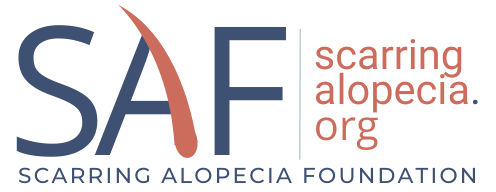Examining the Potential for Koebnerization and Disease Precipitation in Cicatricial Alopecias
Article Summary by Jessica Brown-Korsah | MD Candidate |Case Western Reserve University School of Medicine
In their article, Fried et al. summarize the literature on procedure-induced Koebnerization in scarring hair loss.1 The Koebner phenomenon refers to the development of new skin lesions on previously unaffected skin after trauma to the area (e.g. patients with preexisting scarring alopecia may develop a new active area of scarring hair loss in the traumatized area, patients with psoriasis may develop new psoriatic patches after abrasion to the unaffected skin.)2 In theory, procedural treatments such as hair transplant surgery or injection therapies could induce a ‘trauma’ with the potential to induce the Koebner phenomenon. The authors provide insight into reducing the risk of disease reactivation or Koebnerization due to scalp trauma from those procedures as well.
The article discusses several procedures that have been reported to increase the risk of disease precipitation in scarring alopecia, including hair transplant, facial lifting, traction-inducing hairstyle, or mesotherapy (a minimally invasive method of delivering drugs via injection into the fat to tighten the skin). For instance, a study described 17 previously healthy patients diagnosed with lichen planopilaris (LPP) after a hair transplant. To mitigate this risk, experts recommend waiting 1-2 years after the disease stabilizes before hair transplantation.3
The authors also describe several procedures with a theoretical risk, such as platelet-rich plasma, intralesional corticosteroid injections, scalp cooling, lasers, and microneedling.1 However, no studies have reported new-onset alopecia or worsening of existing scarring alopecia following these procedures.
Based on this review, while injection therapies used to treat scarring alopecia appear to be relatively safe regarding the risk of Koebnerization, a detailed discussion with the treating physicians would be beneficial for patients with existing scarring alopecia. For more invasive procedures such as hair transplantation and certain hairstyles, a careful approach is warranted to minimize the risk. Further studies are needed to explore the role scalp trauma plays in triggering scarring alopecias. Additionally, more research may help healthcare providers counsel their patients on surgical-based therapies for managing scarring alopecia.
See full article here.
Reference: 1 – Fried L, Laughter M, Svigos K, et al. Examining the Potential for Koebnerization and Disease Precipitation in Cicatricial Alopecias. J Drugs Dermatol. 2023;22(1):29-34. doi:10.36849/JDD.6849. 2 – Koebner Phenomenon: Psoriasis & Other Causes, Signs & Treatment. Cleveland Clinic. Accessed March 24, 2023. https://my.clevelandclinic.org/health/diseases/22860-koebner-phenomenon. 3 – Donovan J. Lichen planopilaris after hair transplantation: report of 17 cases. Dermatol Surg. 2012;38(12):1998-2004. doi:10.1111/dsu.12014.
